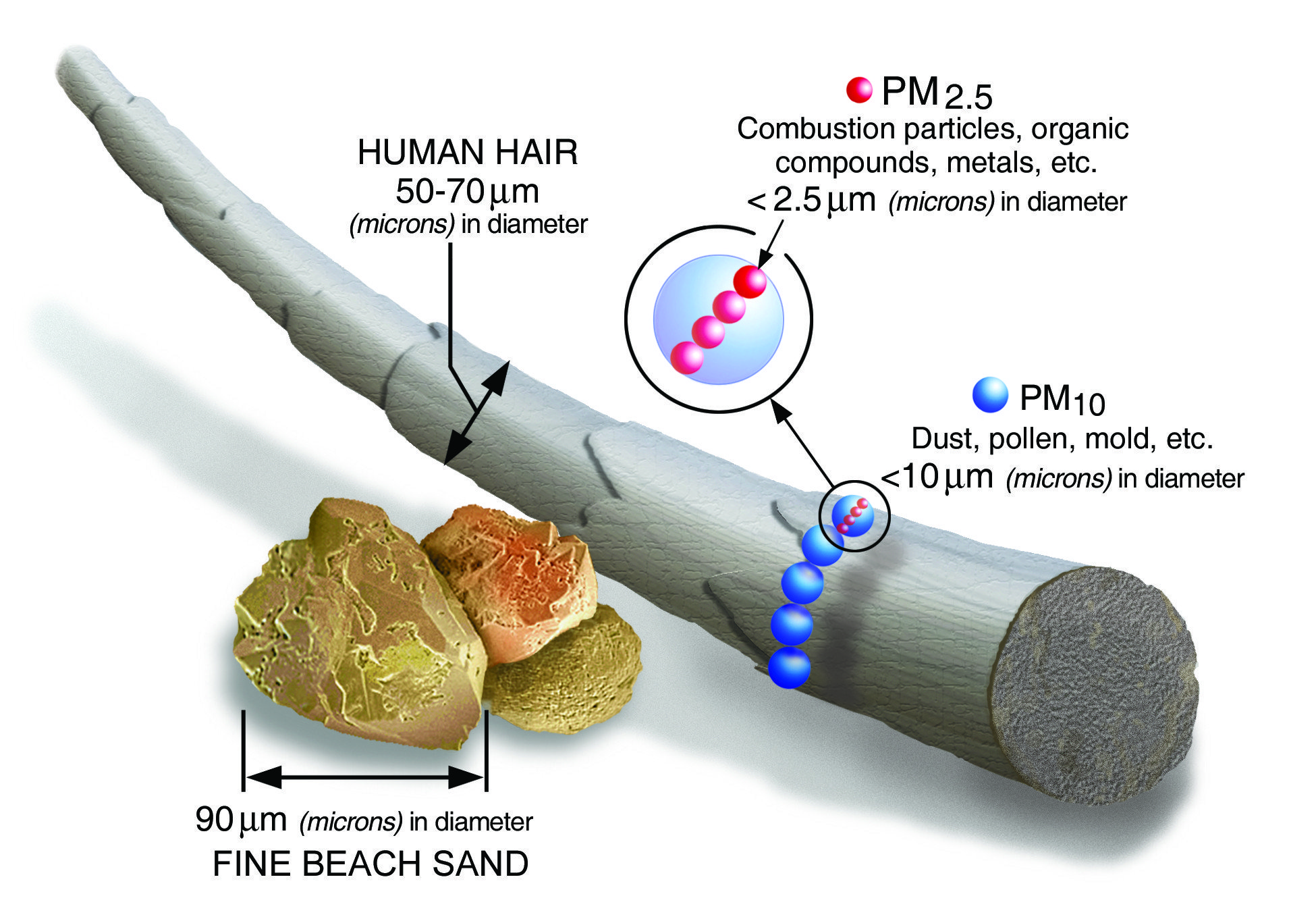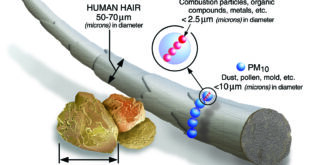
All you ever wanted to know about Particulate Matter (PM) but were too afraid to ask.
PM stands for Particulate Matter.
This is the term for particles found in the air including dust, dirt, soot, and smoke. These particles can be suspended in the air for long periods of time.
Particulate Matter comes in a wide range of sizes, measured in micrometers or ‘microns’. Like inches, meters, and miles, a micron is a unit of measurement for distance, a very small distance. There are 1000 microns in one millimeter and about the same width of a hair on your head.
You can see the particulates that are 50+ microns in diameter by the naked eye. But as they get smaller they tend to invisibility, the Invisible Threat (or TITS as we call them in the scientific industry)
Particulates less than 10 microns in diameter (PM10) start to pose a health concern. For instance, they can be inhaled into the back of the throat region causing irritation and coughing.
Particulates less than 2.5 microns in diameter (PM2.5) include sub-micron particulates (less than one micron). Therefore they are referred to as fine or ‘respirable’ particulates and are believed to pose the greatest health risk.
Because of their size, the normal human filtering system, the nose, and its nasal hair are unable to trap these fine particulates. They pass through the upper airways and deep into the fine capillaries and air sacs which is where the oxygen exchange occurs to oxygenate the blood.
Current concerns are that very small amounts of toxic or carcinogenic chemicals like the VOC Pyrene, are carried on the particulate and taken to the point of exchange. Which allows for the potential of the chemical to be absorbed into the bloodstream.
A typical sample of black smoke emitted from one of the more popular people carrying vehicles would include particulates from 100 microns in size to particulates less than one micron in size. The sizing variation comes from the type of fuel and how efficiently it is being burnt.
Short term health effects are an eye, nose throat, and chest irritation, coughing, sneezing, runny nose and shortness of breath.
Constant exposure to fine particles will also affect lung function, worsen medical conditions in existence such as asthma and heart disease. Also, it may increase the risk of acute respiratory disorders. People who exercise or are consistently being exposed to environments where the PM reading is high, should really take appropriate precautions such as wearing a mask. A mask with a ‘Hepa-type Filter’ to remove sub-micron and all other micron-sized particulates.
People who cycle for an average of 30 minutes to work at a brisk pace are likely to breathe approximately 1800 liters of air in that journey. Due to poor air quality, the air will have a percentage of particulates that they cannot help but breathe in.
In considering the 1800 liters of air inhaled over the journey. The particulates in this large volume of air will stick to the lining of the upper and lower respiratory tract like flies on a Vapona strip. The lungs now have to work to remove these particulate contaminants and them to do this twice a day for two-thirds of a year.
Protect yourself:















